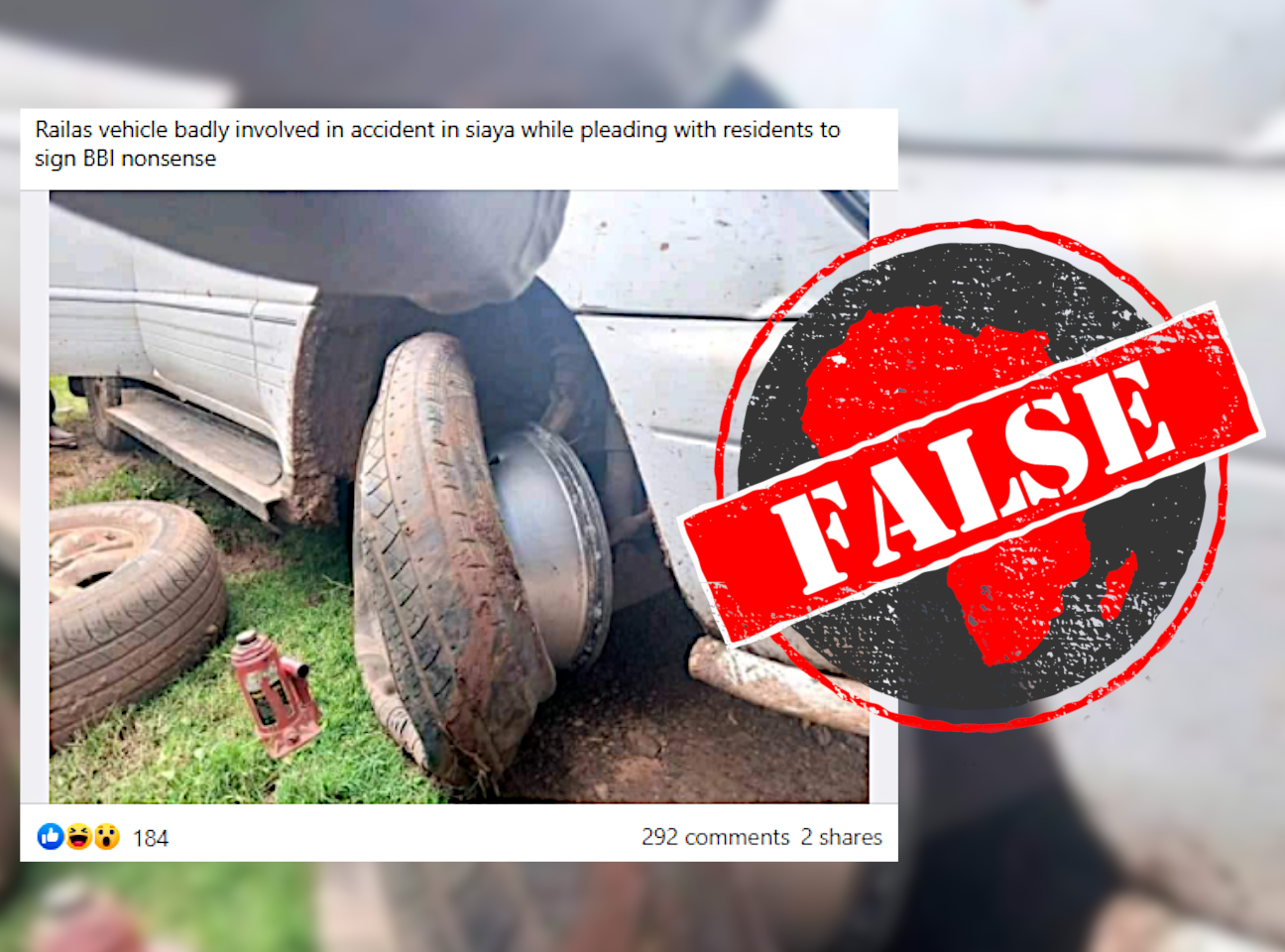A Facebook user shared a photo that he claimed showed the vehicle of Kenyan opposition leader Raila Odinga “in an accident” in Siaya, a town in western Kenya.
The photo shows a badly damaged car tyre. The user claimed Odinga was in an accident while marketing the Building Bridges Initiative, or BBI.
BBI was set up after the “handshake” truce between president Uhuru Kenyatta and his opposition rival Raila Odinga in 2018.
It includes a taskforce to find ways of addressing political, ethnic, social and economic divisions in Kenya. Its first report was released in October 2019 and the second report was handed over to Kenyatta and Odinga on 21 October 2020.
The user shared the claim on two Kenyan groups that jointly have over 130,000 followers, attracting hundreds of reactions.
But does this photo show Odinga’s vehicle? We checked.

Africa Check had seen the photo before.
It was published on the social media pages of Ugandan newspaper Daily Monitor on 1 December 2020. Here it was described as showing the damaged vehicle of Ugandan presidential candidate Robert Kyagulanyi, known as Bobi Wine.
Other media houses in Uganda published different angles of the same scene.
Wine posted several photos of the damaged tyre and accused Ugandan police of deliberately shooting at him and his supporters with intention to kill.
According to Daily Monitor, clashes with police began in Kayunga district in central Uganda, northeast of the capital Kampala, when police tried to disperse Wine’s supporters.
The photo was also broadcast and NTV Uganda posted a video showing the repair of the wheel. The accident has nothing to do with Raila Odinga. – Dancan Bwire
The photo shows a badly damaged car tyre. The user claimed Odinga was in an accident while marketing the Building Bridges Initiative, or BBI.
BBI was set up after the “handshake” truce between president Uhuru Kenyatta and his opposition rival Raila Odinga in 2018.
It includes a taskforce to find ways of addressing political, ethnic, social and economic divisions in Kenya. Its first report was released in October 2019 and the second report was handed over to Kenyatta and Odinga on 21 October 2020.
The user shared the claim on two Kenyan groups that jointly have over 130,000 followers, attracting hundreds of reactions.
But does this photo show Odinga’s vehicle? We checked.

Photo from Uganda
Africa Check had seen the photo before.
It was published on the social media pages of Ugandan newspaper Daily Monitor on 1 December 2020. Here it was described as showing the damaged vehicle of Ugandan presidential candidate Robert Kyagulanyi, known as Bobi Wine.
Other media houses in Uganda published different angles of the same scene.
Wine posted several photos of the damaged tyre and accused Ugandan police of deliberately shooting at him and his supporters with intention to kill.
According to Daily Monitor, clashes with police began in Kayunga district in central Uganda, northeast of the capital Kampala, when police tried to disperse Wine’s supporters.
The photo was also broadcast and NTV Uganda posted a video showing the repair of the wheel. The accident has nothing to do with Raila Odinga. – Dancan Bwire
Republish our content for free
For publishers: what to do if your post is rated false
A fact-checker has rated your Facebook or Instagram post as “false”, “altered”, “partly false” or “missing context”. This could have serious consequences. What do you do?
Click on our guide for the steps you should follow.
Publishers guideAfrica Check teams up with Facebook
Africa Check is a partner in Meta's third-party fact-checking programme to help stop the spread of false information on social media.
The content we rate as “false” will be downgraded on Facebook and Instagram. This means fewer people will see it.
You can also help identify false information on Facebook. This guide explains how.


Add new comment